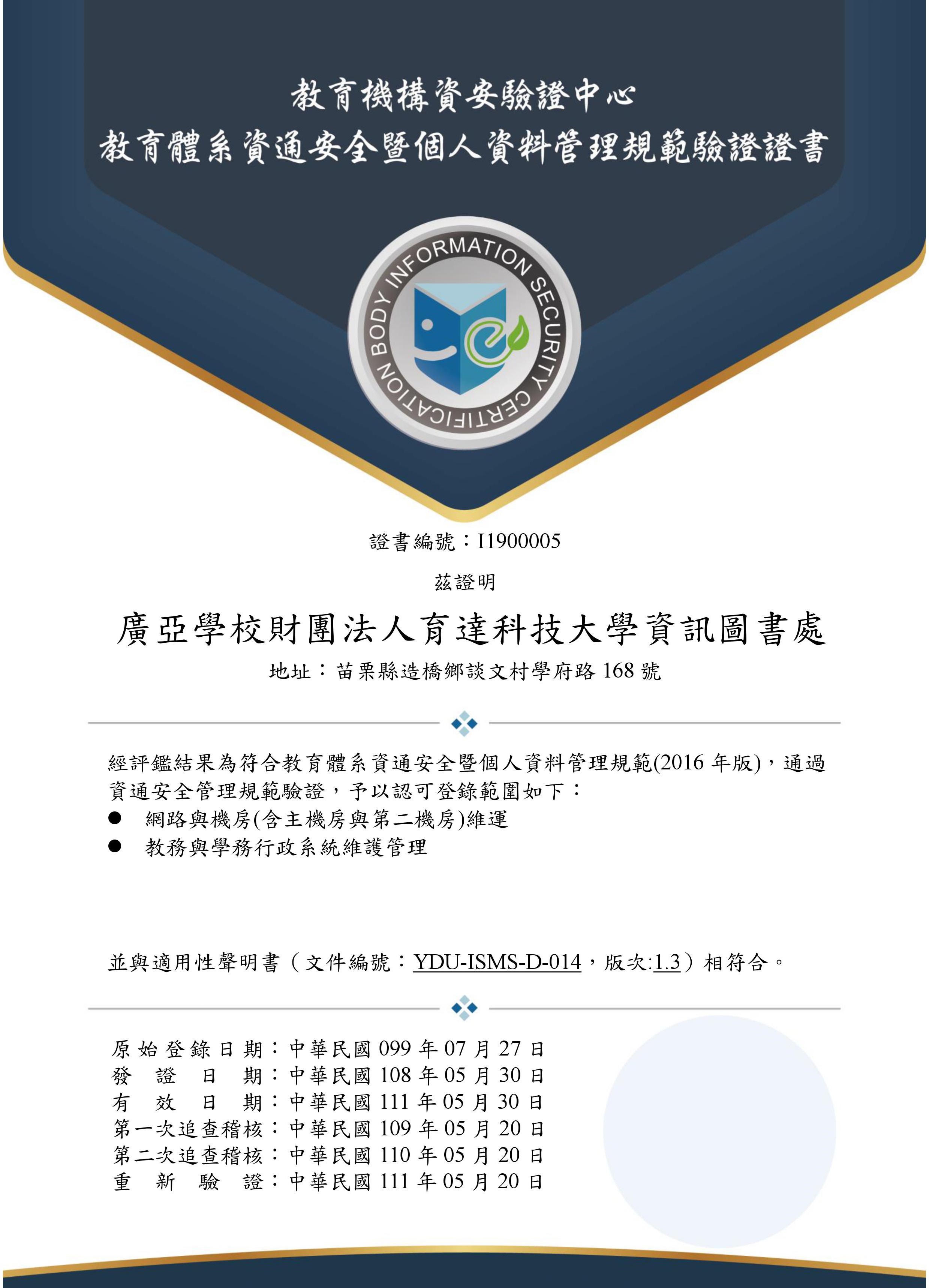Information Security Management (ISMS)
Overview of Information Security Management
To ensure the confidentiality, integrity, and availability of the university's information assets and to comply with relevant laws and regulations, the Office of Information Services (OIS) implemented the ISMS (Information Security Management System) certification for the education sector in 2009. The university passed third-party external audits by the Education Institution Security Verification Center in July 2010, and subsequent audits in 2013, 2016, and 2019 confirmed our capability to protect information assets.
The following outlines the main measures the university has taken to maintain information security while providing convenient IT services:

Main Information Security Measures
- Strengthened information security awareness among staff and implemented ISMS, obtaining certification under the educational information security standards.
- Aligned with the Ministry of Education's "TANet School Information Security Management Standards" program, creating internal security policies and implementing management measures.
- Used SSL VPN with 128-bit encryption to provide secure network access.
- Automated network management system detects and blocks malicious attacks while notifying administrators via email.
- Upgraded campus backbone network to 10Gbps, deployed high-end firewalls and medium-level intrusion detection systems, and established off-site backups to protect critical servers and databases.
- Implemented a dual-firewall system to prevent external intrusion and protect internal systems.
- Installed smart card access and video monitoring systems in computer rooms, with temperature/humidity monitoring and remote control capabilities.
- Deployed spam and email virus protection systems to provide a secure email platform.
- Conduct annual cybersecurity training to strengthen self-protection awareness among faculty and students.
- Implemented a personal information portal with SSL and single sign-on integration for unified access to IT services.
- Established automatic antivirus updates for software and virus definitions to improve efficiency and reduce user burden.
- Designed automated password management and reset mechanisms to enhance email account security.
- Promoted SSH-encrypted remote connections to prevent theft of credentials and data.

 Office Information & Library-Information Services
Office Information & Library-Information Services
